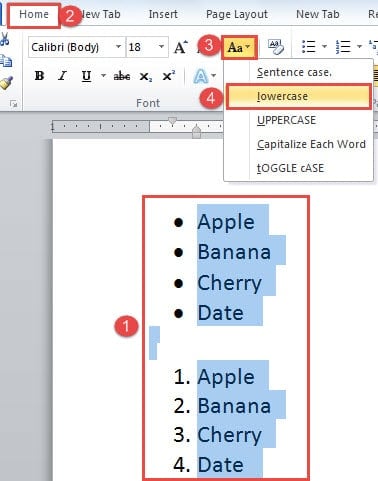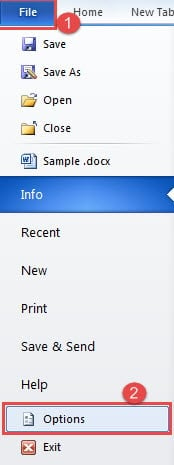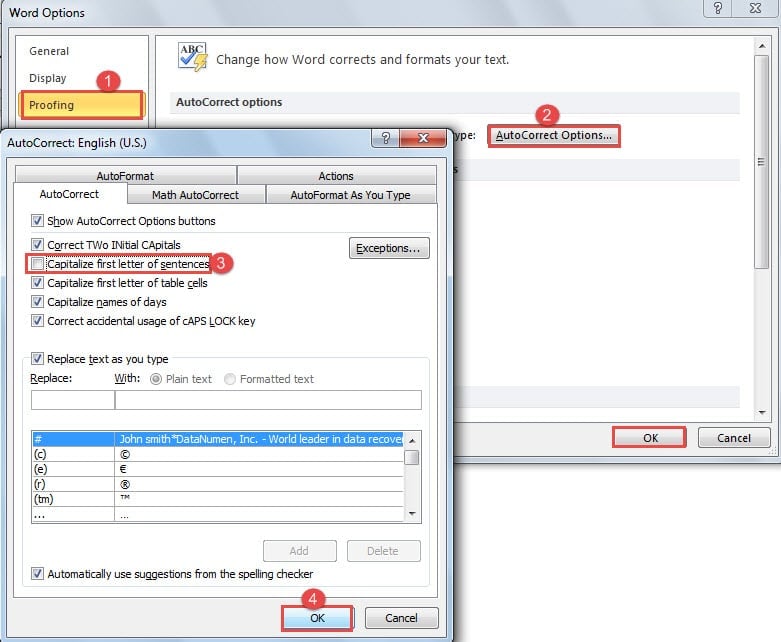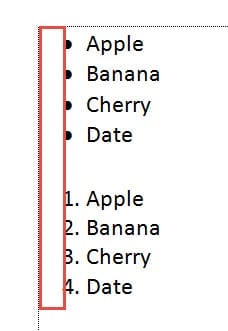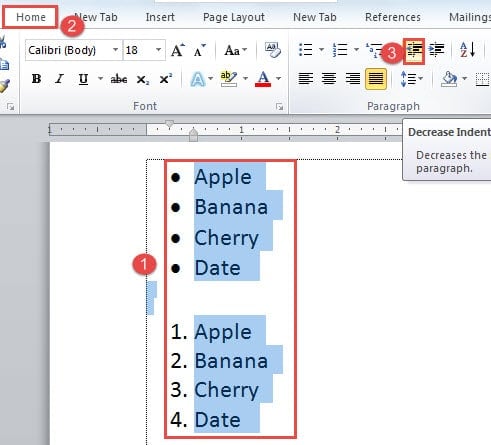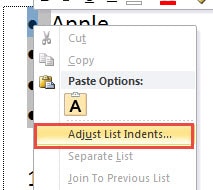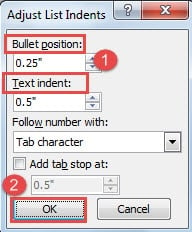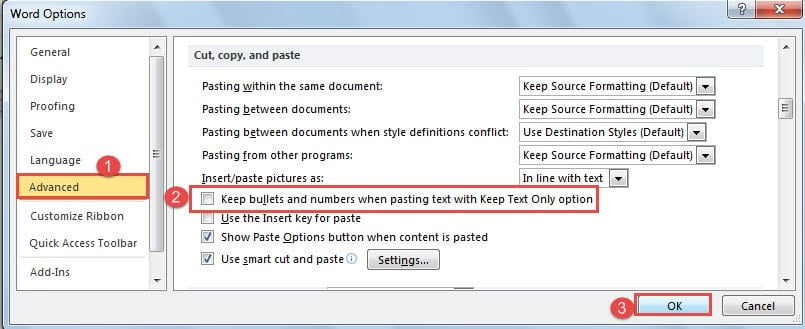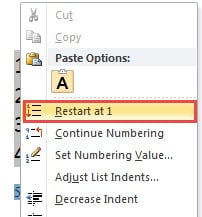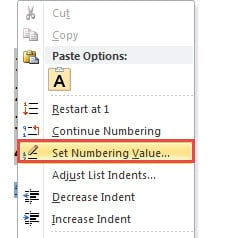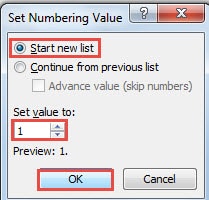In today’s article, there are 6 useful tips available to help you make easy use of numbered or bulleted lists in your Word document.
“Bullets” and “Numbering” are 2 useful features in Word, ensuring items in your Word document are organized in a neat way. However, as long as we continue benefiting from this function, there are little problems which can be annoying and ruin our document formatting sometimes. Therefore, here are 6 tips which make it easier to handle bulleted or numbered lists. Let’s take a look at different cases and then see their solutions.
Case 1: Issue of Capitalization
If you have ever used a numbered or bulleted list, you will find the first word of each item is always capitalized automatically, such as below: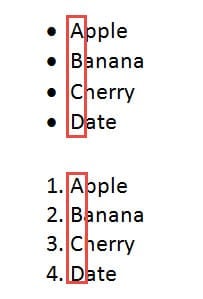
This is because Word considers each item as a sentence. Yet, we don’t need such a consideration sometimes. Then here are tips you can take:
Tip 1: Change Case Manually
- Firstly, you should select list contents.
- Next, go to “Font” group under “Home” tab and click “Change Case”.
- On the drop-down list, choose “lowercase”.
Or you can choose to select all the first letter of all items vertically in step 1 and then change their case. As for how to select texts vertically, please refer to this article: 2 Quick Ways to Select Texts Vertically in Your Word Document
Tip 2: Change Word Options
An alternative way is to make change of Word options before creating a numbered or bulleted list.
- Click “File” and then click “Options” to go to “Word Options” dialog box.
- Next, click “Proofing”.
- Then click “AutoCorrect Options”.
- The “AutoCorrect” dialog box shall pop up. Clear the “Capitalize first letter of sentences” box.
- Lastly, click “OK” in both open dialog boxes.
After this, all new lists created in the future will get affected.
Case 2: Issue of Indents
Have you noticed there are always indents before a bulleted or numbered list? This is especially apparent if we show the text boundaries.
To eliminate them, you can take following steps:
- Select the entire list.
- Then go to “Paragraph” group under “Home” tab. And click “Decrease Indent” option.
- Or you can first select a list number then right click on it.
- On the list-menu, click “Adjust List Indents”.
- In the same name dialog box, choose to alter the bullet or number position and indents accordingly.
- Then click “OK”.
You have to know that such a change will affect all the lists afterwards. But if you use first 2 steps to kill the indents, the impact is on the list you selected only.
Case 3: Remaining of Bullets or Numbers
To get only the contents of a numbered list, we often choose to paste by “Keep Text Only” option. The truth is it’s not enough. The numbers or bullets will also come with the text. To address that, additional settings are required.
- Open “Word Options” dialog box first.
- Then click “Advanced” this time.
- Next, go to “Cut, copy and paste” part. Clear the “Keep bullets and numbers when pasting text with Keep Text Only option” box.
- Finally, click “OK”.
This is a once for all modification. Certainly, you can choose to remove the bullets or numbers of a single list. Then in that way, you paste the list with “Keep Text Only” option and selected the numbers or bullets vertically and delete them.
Case 4: Number Awkwardness of Starting New Lists
When you want to start a new numbered list below an existing one, Word will by default generate a number following the previous list. Here are 2 tips for you to deal with that:
Tip 1: Restart at 1
- Firstly, right click on the new list number.
- Then choose “Restart at 1” option, and everything should be fine.
Tip 2: Set Numbering Value
- Right click on the new number, too.
- This time choose “Set Numbering Value” to open the same name dialog box.
- Make sure the “Start new list” option is selected.
- Then set the value to “1”.
- At last, click “OK”.
Work out the File Corruption Issue
In our daily experience of processing words in Word, it’s barely impossible to avoid losing files due to Word crashes or virus attacks. Most of the time, these files are not totally missing but get compromised in some way. To extract the critical information out, you need an excellent Word file corruption recovery tool.
Author Introduction:
Vera Chen is a data recovery expert in DataNumen, Inc., which is the world leader in data recovery technologies, including xls file problem repair tool and pdf repair software products. For more information visit www.datanumen.com
